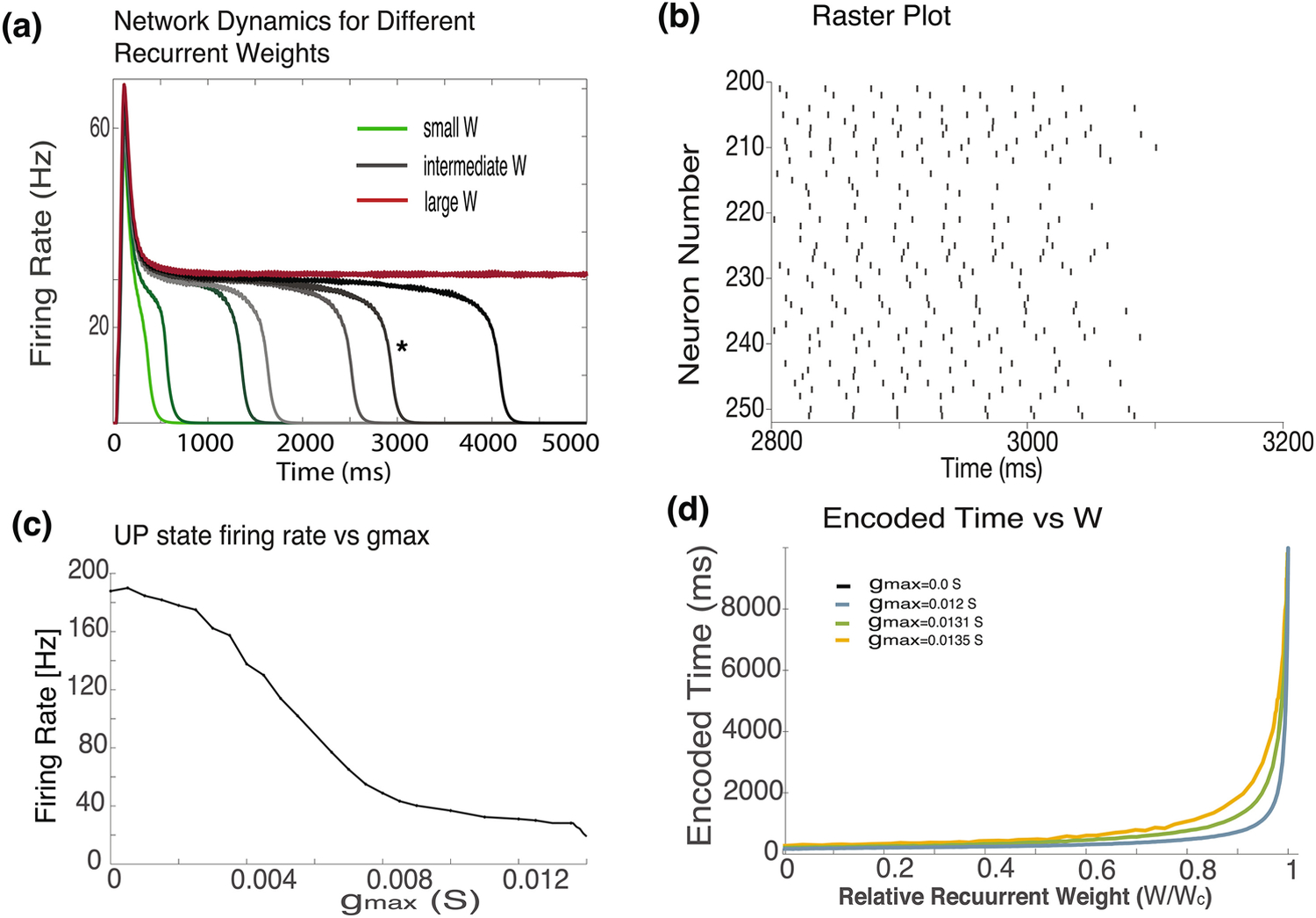Fig. 3.

Network behavior with AIF neurons. Dynamics of recurrent networks with AIF neurons with different recurrent weights (W). For small weights (green) network activity decays rapidly, as weights increase (gray) the network dynamics exhibits a longer plateau, and at sufficiently large W the network becomes bistable. Firing rates at the plateu are moderate (30–40Hz). (b) Raster plot of network that decays at ~3100 ms (indicated by * in 3a). Spikes are shown for a set of 50 neurons and from 2800–3200 ms. Spike times are irregular and uncorrelated across neurons. Mean firing rate of the network when the new hybrid model is implemented. The network activity peaks around 50 Hz and drops to a plateau level at about 30Hz that maintains for extended time periods. (c) The relation between the firing rate just above criticality of the UP state in a bi-stable network and the conductance of the ICAN channel (gmax). As gmax, increases the firing rate just above criticality decreases. (d) The T vs W curves for AIF networks with different gmax values. In the LIF network (gmax = 0, black) a very steep curve is obtained. As gmax is increased, the curves become progressively less steep. The recurrent weights in the x axis are normalized in that they are divided by Wc; the minimal W at which the network becomes bistable
